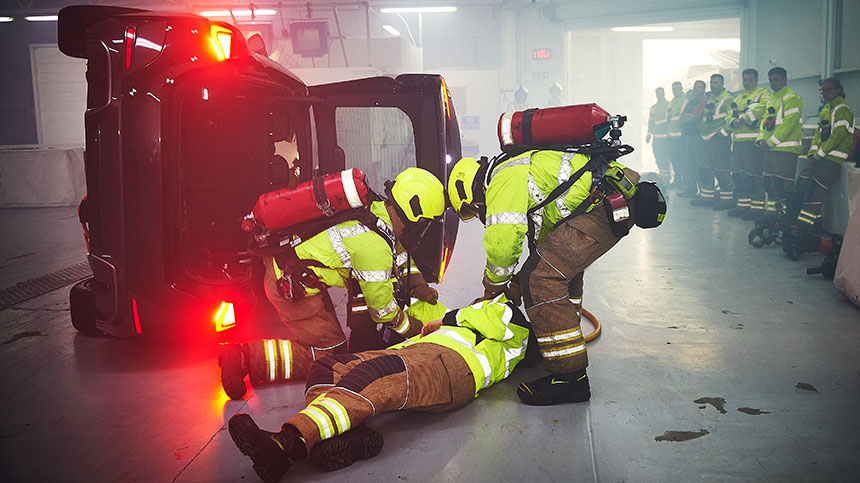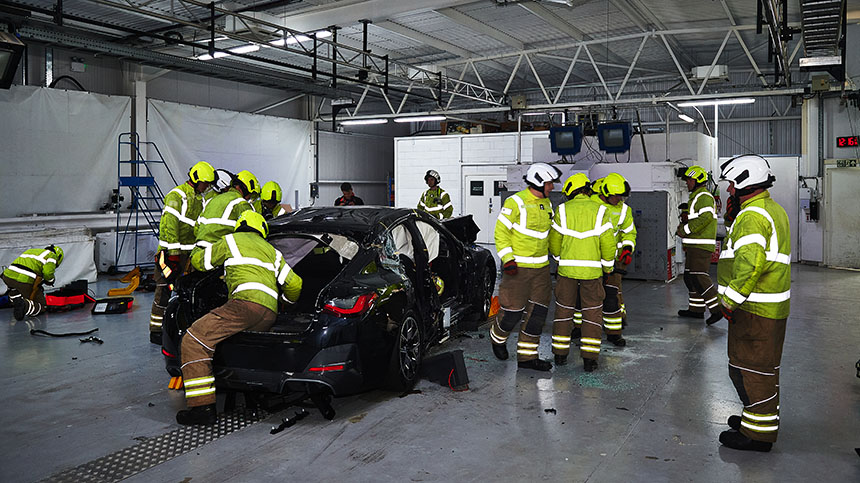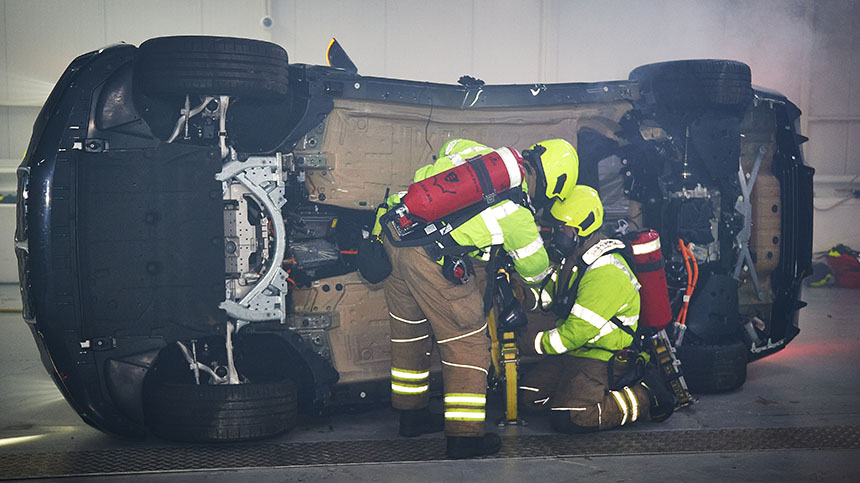Thatcham helps fire crews practice safe EV extrication

Thatcham Research recently welcomed two crews from the Royal Berkshire Fire and Rescue Service (RBFRS) to its Berkshire HQ to enhance their incident response approach to modern vehicles.
The Thatcham Research crash team provided and prepared a modern vehicle, previously used for research projects and safety tests, to simulate real-life emergency scenarios.
Thatcham helps fire crews
The electric vehicle was placed on its side to allow first responders to practice a “rapid extrication” scenario when the high voltage battery had gone into thermal runaway, which can occur when the HV battery in an EV is damaged or experiences an internal failure and begins to burn. During thermal runaway, the EV battery will burn at an accelerated rate and become extremely hot, presenting a challenging situation for our emergency services.
This simulated scenario helped the RBFRS crews refine their techniques for quickly and safely rescuing occupants from a damaged EV.
Following this, the crews experimented with new equipment designed to improve rescue operations and more effectively deal with some of the high tensile steels found in newer vehicles.


Firefighters on Green Watch practiced removing the roof of the car and pushing the dashboard away from the occupants’ legs, ensuring they could efficiently free trapped individuals in various collision scenarios.
Sean Hoad, senior engineer for passive safety and instrumentation at Thatcham, said:
“I am pleased we could support the Royal Berkshire Fire and Rescue Service. As the number of EVs on our roads increases each year, undertaking training like this is a crucial step in ensuring that our emergency services remain prepared and protected.
“Thatcham Research is proud to offer its facilities and expertise to first responders, helping them to understand the types of technologies found on modern vehicles and the safest way to work with them.”
“Electric vehicles require unique training on safe handling techniques following a road traffic collision. Time is of the essence in the immediate aftermath of a road traffic collision, so it’s vital that first responders are confident when working around high voltage vehicles, including how to ensure the vehicle is powered down and the location of safe cutting points.”
Operational response
Adam Brailsford, watch manager at Royal Berkshire Fire and Rescue Service, added:
“This training exercise allowed our Green Watch crews from Wokingham and Theale fire stations to test our operational response to incidents involving electric vehicles and similar, emerging vehicle technologies. I would like to thank the staff at Thatcham Research and I look forward to sharing our findings more widely across the service.”
Click this link for more information on Thatcham Research EV training.






